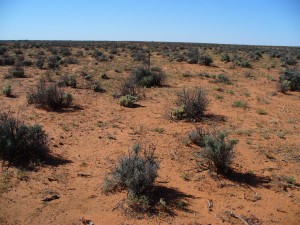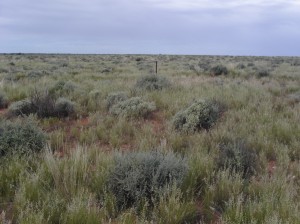March 31, 2014
This review was written by me in 2009 after I had first read the 2 books, rip out and grab a copy if you haven’t already read them.
(“Back from the Brink” & “Beyond the Brink” By Peter Andrews)
These two interesting books moved me enough to put something down on paper to encourage others to read them and be challenged by Peter’s ideas and interpretations of the landscape. I’m not going to give a run down on the contents of the books as you will have to read them to capture that, I’ll just give you a taste of some of the concepts that peter deals with.
The first book (Back from the Brink) outlines the way that Peter interprets the landscape and how he has been able to re-invigorate the land on the properties that he has worked with. The second book takes these methods and shows how they can be adapted to deal with some of the biggest land management issues going on in Australia, namely the Murray-Darling system and the salinity in Western Australia. At the same time there are little gems and things that you can do on your own property no matter if you have ¼ ac or 100,000ac.
Some of the challenges thrown to you in the books are: What is the difference between native and introduced plant species? Why do we have to use only native species when rehabilitating an area? Why do you spray out weeds when they may be doing a very important role? Is carbon dioxide the cause of global warming or a symptom?
These are just some of the many challenges thrown out to you, speaking of “thrown” sometimes these challenges were very hard for me to take on board so you do feel like throwing the book against the wall, I guarantee though, that you will go over, pick it up and keep going until the urge grabs you again. Both books are easy to read, you just have to be careful that you don’t miss some of his subtle methods so don’t be frightened to pick up a pencil and jot down ideas and page numbers to go back to them.
As someone who has met Peter Andrews I think that he has an enormous amount to offer land management both in Australia and around the world. He is a very decent person that will happily sit and chat about his experiences for hours and I’d happily listen to him for hours.
Both of these books are available at ABC shops or online just ask for them by name. Enjoy them and I would like to see more people read them so that we can have some really positive ideas for ways forward in land and water management in this country
March 10, 2014
I don’t know how many times I hear people say that “My land shouldn’t be grazed” or “grazing wrecks the land” or even “that land really needs a good graze”. Now all of these statements are correct, and all are absolutely wrong, because grazing isn’t that simple and depends entirely on who is driving the tool!
So let me explain to you how I see grazing, there are two main types, with multiple variations:
- Set stocking: This is when if you say have a 500ha paddock and the conservative carrying capacity of that land is about 1 sheep/ha, then you would put 500 sheep in there for the year, every year. This usually results in very good animal productivity, without always having the flexibility to respect the land.
- Time controlled/rotational grazing: This is when you run larger mobs of stock resting paddocks so that stock are only on a portion of the property at any one time. This can be a very sharp tool that requires good management, normally there is lower individual animal performance, offset by a higher stocking rate.
I would be pretty sure that most properties grazing systems would fit somewhere into these rough two categories. The outcomes of either system or any hybrid in between are extremely dependant on who is “driving” the tool. So why then do people broadly place grazing under 1 banner? I suggest this is done mainly through lack of knowledge and respect for the people that are out there grazing, the farmers. Such a shame when I see so called peer reviewed scientific paper that talks about the damage livestock cause to the land, or the weeds they bring up and so on, when all those involved in putting together the paper have done is thrown away all of their I.Q. by disrespecting others.
I’m yet to hear of a grazing management trial that has been done using experts, i.e. farmers managing the systems, there is no doubt that the outcomes of all grazing management trials have been compromised due to lack of livestock handling and landscape interpretation skills. Enough of worrying what others think of grazing, time to start talking about using grazing to help you.

Site 1 Landscape Feb 2008
So when looking to put together a grazing management system in harmony with the land, you need to first understand what you have and be prepared to take responsibility for the current condition of you land/farm. Then you set yourself some goals, I prefer to set a pathway with no end so I can keep reaching for the stars. Once you have a clear direction you make up an inventory of all the resources at your disposal, before finding the best way to utilise them in order to start moving in the right direction. An example of the resources would be: cash, people, services, machinery, other?
This way you can put together a grazing system that not only meets your needs, it also respects your land, the people, the livestock and the business. So if you think that grazing won’t work on your place, maybe you should see some of the wonderfully skilled operators out there that could graze any land to improve it, while making stock and people happy & healthy and even money in the bank!
Remember grazing can be the sharpest tool in your tool box that you can’t go without or it can be a blunt bit of wood that lies around, no value to anyone, burn it, get rid of it, you and you alone will be responsible for either outcome!!

Site 1 Landscape Feb 2011


